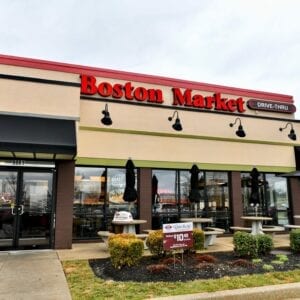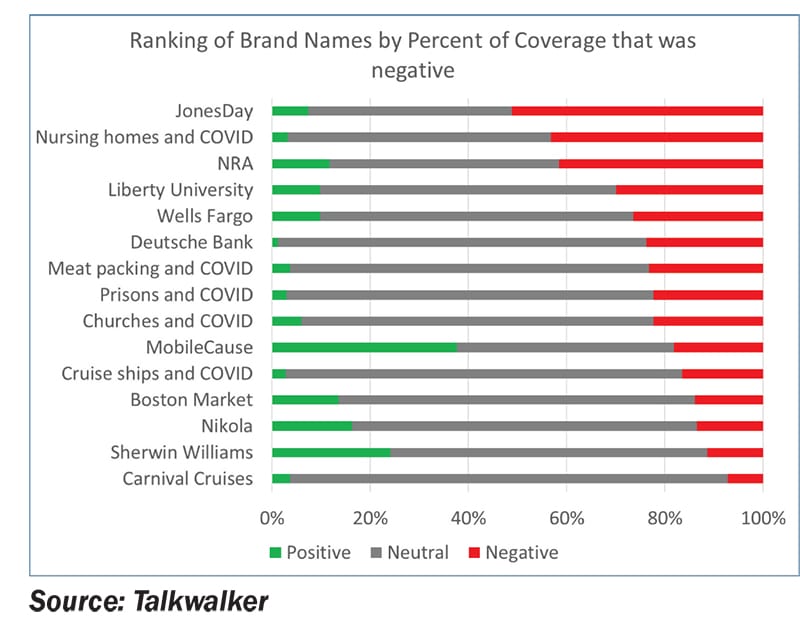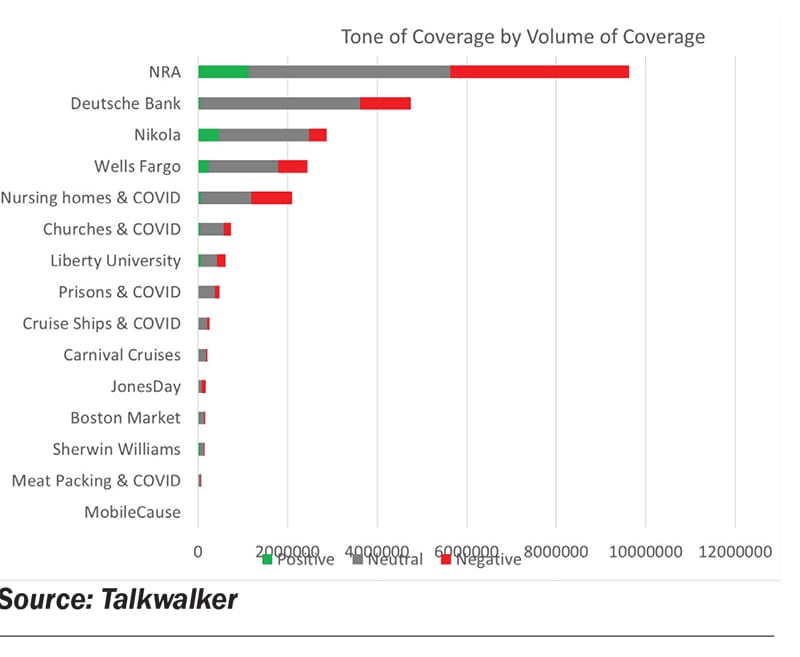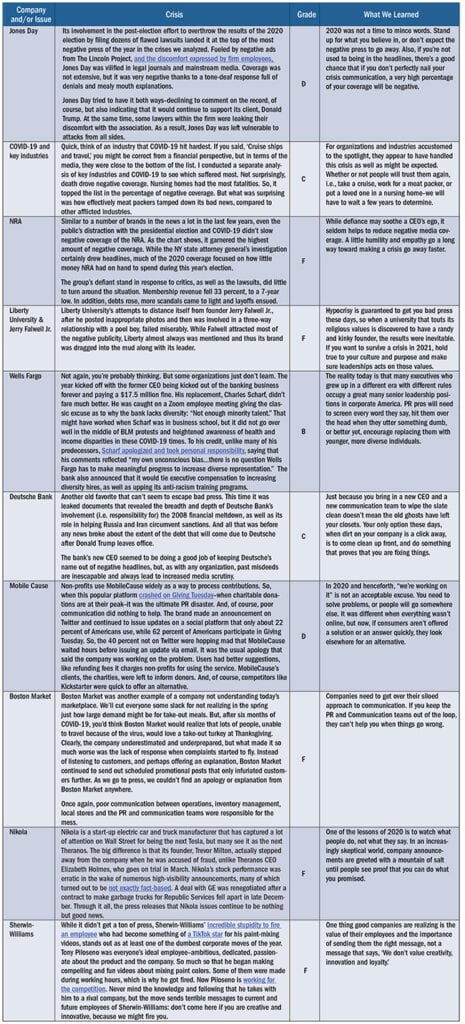
If you are a crisis consultant, 2020 was your banner year. It’s not as if we were all stuck in our houses with nothing better to do than rage tweet about some real or perceived transgression on the part of a big-name brand or celebrity. Oh, wait. That was 2020. But when we look back at the year, clearly there were societal changes that contributed to a proliferation of attacks on brand reputation.
- Just because we think it’s a crisis doesn’t mean it is. There were many times during this dumpster-fire year that my heart went out to PR folks for some brand thinking, ‘Oh my god, this is a disaster.’ Yet it all went away within a few hours.
- For all the fallout from the COVID-19 pandemic, the most long-lasting may be the visibility it provided to the incredible inequalities in society and the power of empathy (or the liability of lacking it.) We got used to doctors and nurses taking to the airwaves to beg people to wear masks and get them more PPE.
Pictures of what goes on in meat packing plants horrified us, nevermind endless food lines contrasting with the very wealthy retreating to yachts and private islands. Every image on every platform showed us the chasm of disparity that is our society, all of which made tone-deaf CEOs, and their brands, fair targets for rage.
- Flat-footed, clueless brands that thought they could keep on keeping on doing the same old same old, were inevitably called out, made fun of, and probably lost market share to other nimbler competitors. Sherwin-Williams, are you listening? If so, we have two words for you: Ocean Spray.
- Social now matters as much if not more than traditional media–Boston Market took a good idea and gave itself one of the biggest blackeyes of the year. Dangling the possibility of an easy takeout Thanksgiving dinner, and then leaving people standing in unsafe lines for hours, it earned the enmity of millions of former consumers. It wasn’t a big news story because most of the rage was vented and shared on social media, but the damage was no less real.
- Everyone is mad at “The Machine.” For anyone who grew up in the 70s, 2020 provided a lot of déjà vu. Between BLM protests that brought people of all ages into the streets, to the fights between protestors and cops–add in a general feeling of rage against the establishment–and it all felt very familiar to many of us.

This universal rage at corporate and political establishments meant many brands perceived as out of touch were held accountable. Employees walked out at Amazon, Facebook, Google, Wayfair and others to protest tone-deafness and discriminatory behavior. Unions, specifically those representing meat packers, health care workers and flight attendants, moved into the vacuum lefty by HR departments and company spokespeople, reluctant to wade into the morass of diversity and inequality.
- Getting rid of the leader, doesn’t always help As we saw with the Liberty University/Jerry Falwell crisis, as well as the Richards Group, just getting rid of the offender in chief doesn’t necessarily make the problem go away. Liberty U’s negatives continued throughout the year, and the Richards’ Group lost most of its major clients.

With that perspective, we took two-dozen or so major brand crises that surfaced in 2020, and used Talkwalker’s technology platform to analyze them by volume of coverage and percentage of coverage that was negative. We were surprised by what we found, in both negativity and volume.
One caveat: In both volume and negativity, Facebook tops the list. However, given the nature of its brand, we didn’t feel the numbers we were getting were comparable to others we analyzed.
CONTACT: [email protected]

